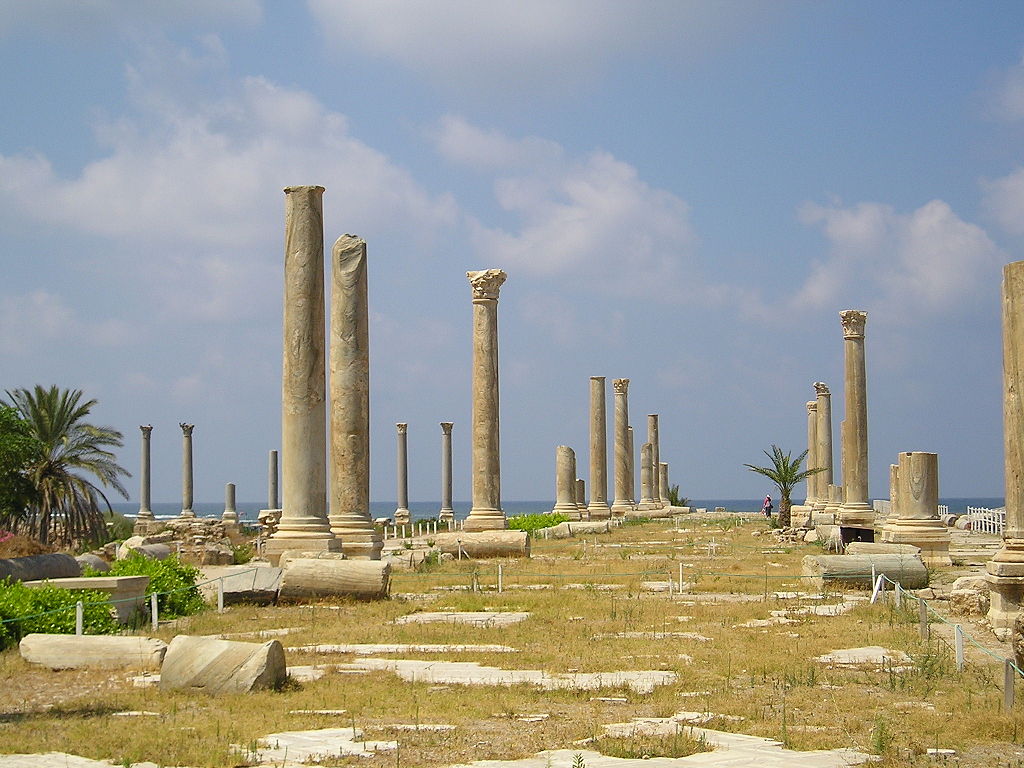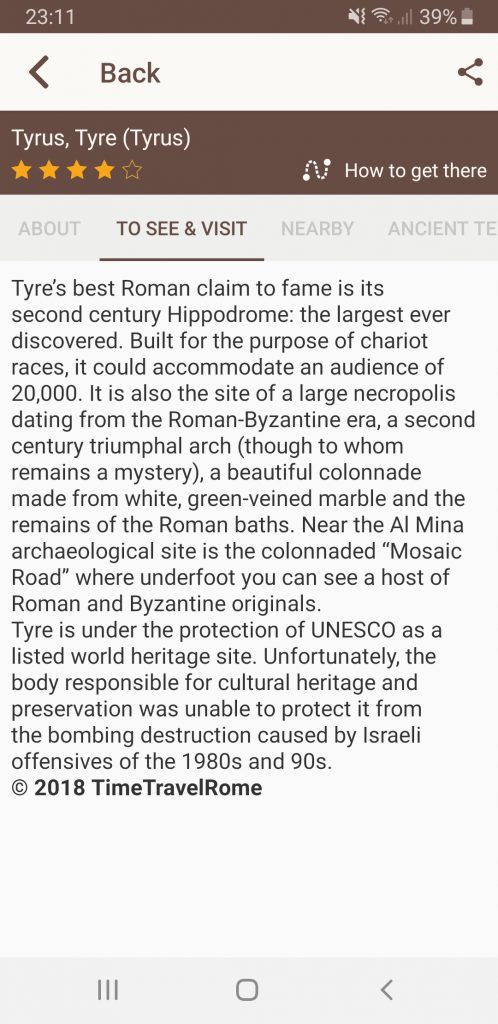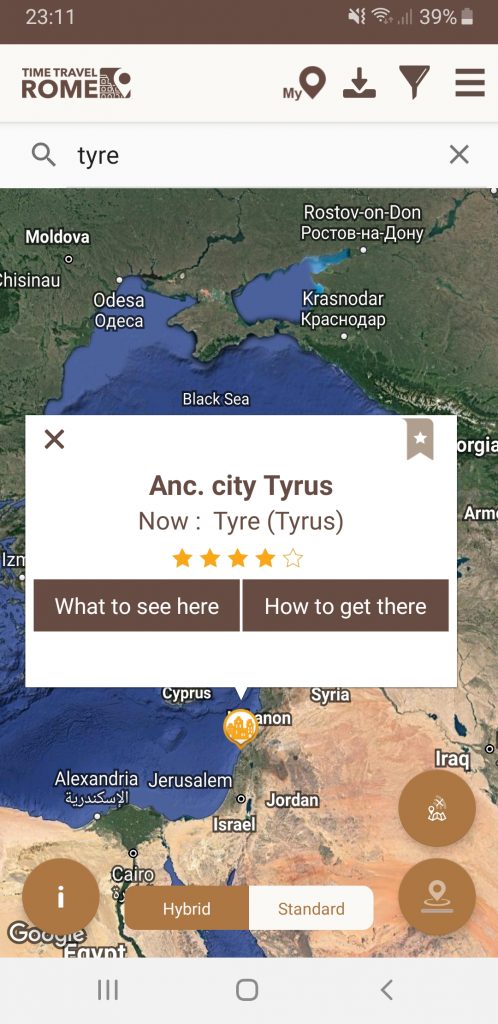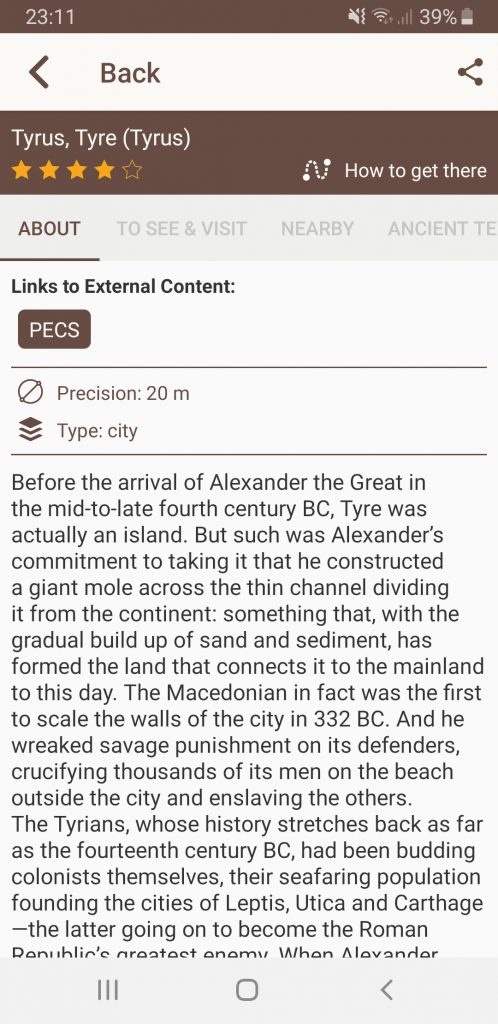The city of Tyre has a rich mythological background. Legends say the city was the birthplace of both Europa, who was abducted by Zeus while he was in the shape of a bull, and the fabled Queen Dido of Carthage. Phoenicians founded the original city, called Ushu, around 2750 B.C. at the base of a bay. Its inhabitants built a smaller trade centre on a small island about one-half mile offshore. Over the years, the island center grew larger, and became the main city metropolis. The original mainland city became known as “Old Tyre.”
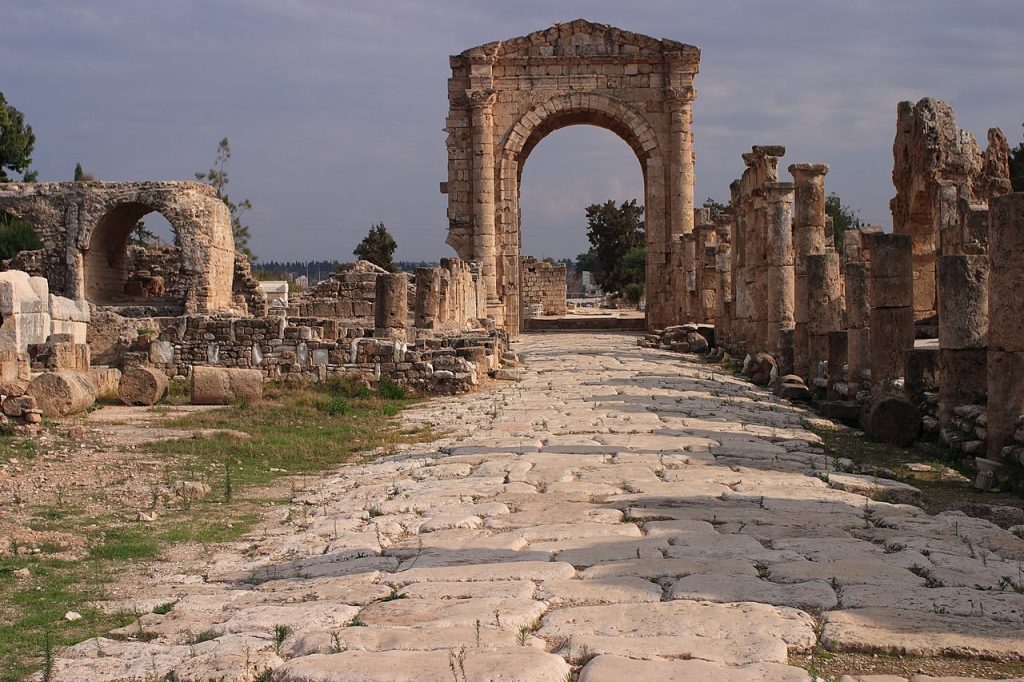
Tyre enjoyed its heights of prosperity around the 10th-7th centuries B.C. Its wealth came from the abundance of Murex shellfish. Their shells enabled the Tyrians to produce and sell a rich purple dye unrivaled in the ancient world. In the 6th century B.C., their prosperity attracted the attention of King Nebuchadnezzar II. He attacked Tyre, maintaining a siege for thirteen years but never taking the city. This spectacular failure discouraged attempts from most kings and generals, but Alexander the Great was neither an average king, nor an average general. In 332 B.C., he began his spectacular siege of Tyre.
Macedonia Attacks
Determined to overthrow the Persian Empire, Alexander knew he would need to interrupt the movements of the Persian navy. With no fleet himself, he began a strategic conquest along the coast of Asia Minor. City after city fell to the great Macedonian army. By the time they reached Tyre, Alexander’s reputation had preceded him. King Azemilk wisely sent out envoys to meet Alexander, pledging his support and allegiance, and placing his city at the Macedonian King’s disposal. Alexander offered to make a sacrifice at the Temple of Melqart, a Phoenician equivalent to Alexander’s beloved Hercules. Unfortunately, the Tyrians sacred festival had begun, and they allowed no foreigner to set foot on the island during that time. King Azemilk proposed that Alexander could sacrifice to Melqart on the mainland in Old Tyre, but he could not allow him into the central city.
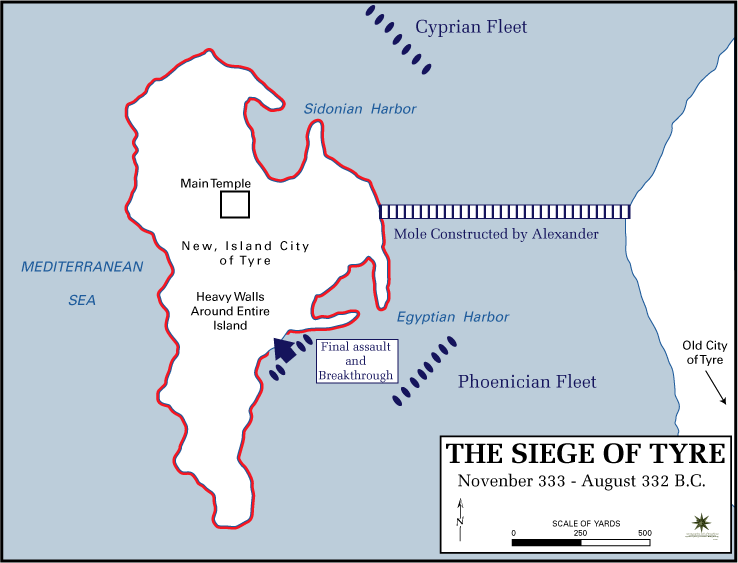
Alexander was not a man who took kindly to being told “no.” Insulted and infuriated, Alexander exclaimed “you think nothing of this land army, because of your confidence in its position, living as you do on an island, but I am soon going to show you that you are really on the mainland. And you can be sure that I shall either enter your city or storm it.” In an attempt to avoid a protracted siege, he sent messengers to the island, demanding that the city surrender. Secure in their defenses, the Tyrians duplicitously murdered the messengers. They threw their bodies off the walls and into the sea, as Alexander and the Macedonians watched in horror. So began the great siege of Tyre. During the months-long battle, both sides showed incredible innovation in the art of warfare. They invented engineering marvels of their era, some of which remain commonplace today.
Siege and Defense Innovations
Alexander decided to construct a mole through the harbor to support a bridge. His men thought the task impossible, but such was his magnetism that he convinced them to begin work willingly. The Macedonians destroyed Old Tyre, using timber and stone from the city to construct a base on the seabed. Initially not comprehending their enemy’s intentions, the Tyrians rowed out in small boats and floated alongside the toiling Macedonians, mocking them incessantly. They taunted the “famous warriors, now carrying loads on their backs like pack-animals” and jeeringly asked if Alexander “had more power than Neptune.” If anything, the insults only steeled the resolve of the Macedonians. Soon the Tyrians realized that they were indeed in danger. They returned in boats, but this time with archers, shooting at the workers. Alexander ordered his men to hoist up animal skins and large sheets of canvas to protect his men.
The Tyrians responded by constructing a kamikaze boat. Smeared with tar and Sulphur, they rowed it out until it caught the wind, lit the bows on fire, and jumped off into their following boats. The flaming vessel crashed headlong into the mole, setting the timbers and structures ablaze. Men burned in the flames. Those who could threw themselves into the sea. The Tyrians wanted to take them alive, so they beat the swimming Macedonians’ hands until the men were disabled. Then they would take them on board. Undeterred, Alexander resolved to build an even bigger mole. Using whole trees heaped with dirt and rock, they created an immensely strong, interlocking structure. Also of assistance, was the fortuitous arrival of Alexander’s fleet, which gave further protection to the working soldiers.
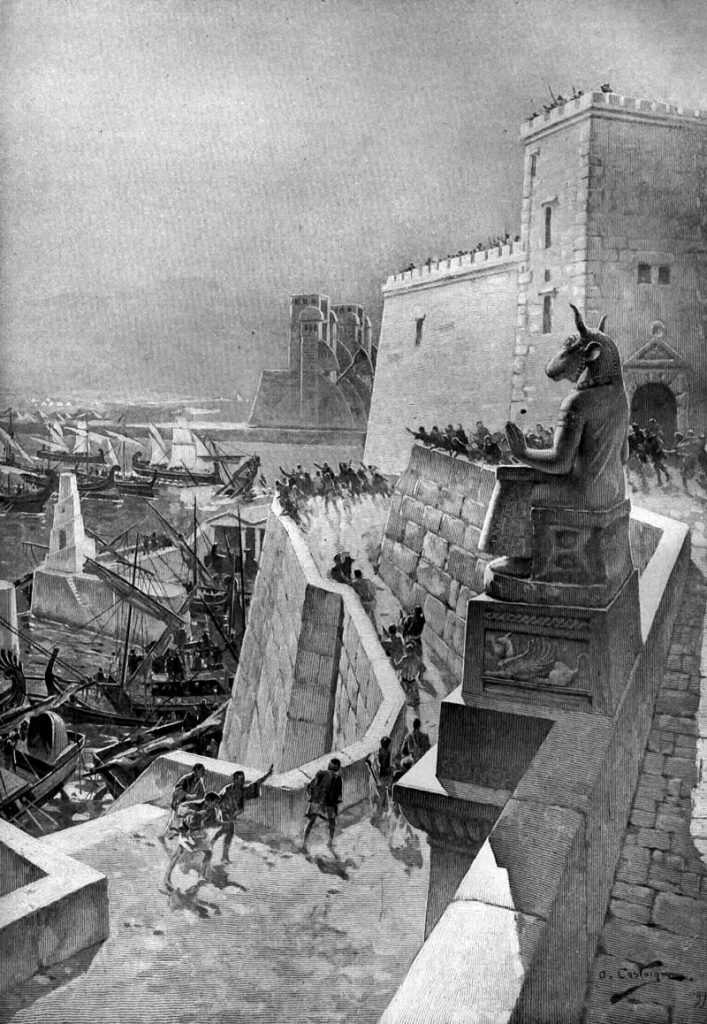
The City Falls
Alexander mounted his rams and towers on his ships, and attacked the walls from a floating siege array. To combat this, the Tyrians hurled huge chunks of stones over the walls, so that the ships would tear themselves up if they came too close. Alexander mounted winches on the ships, and anchored them securely to winch away the debris. The Tyrians sent swimmers out to cut the anchor lines, and so Alexander replaced the rope with chain. At one point during the siege, Carthaginian ships came to give encouragement to the city. They offered no significant assistance, but at least evacuated Tyre’s women and children to Carthage for safety. The Tyrians focused on building a second wall around the city for protection. Soon after the wall’s completion, the mole reached the island, and the Macedonians brought their siege engines up.
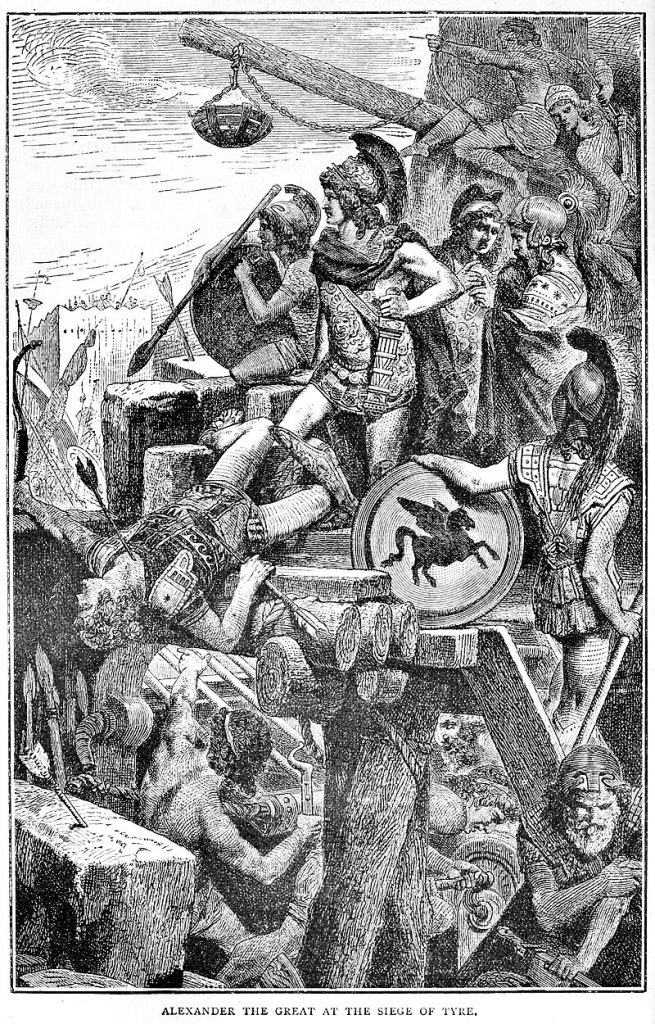
Fierce fighting ensued around the walls, with the Tyrians continuing to demonstrate their ingenuity. They created spoked wheels to turn continuously on the ramparts and destroy incoming arrows. They also heated sand until it was scalding, and then dumped it over the walls onto the attacking Macedonians. Despite all their defenses, the rams did their work and broke their walls. At the same time, Alexander had brought up his ships still carrying siege towers. Tyre faced a breach from all sides. In a daring act typical of the young king, Alexander mounted the first floating siege tower, threw down a plank of wood to bridge the distance to the city walls, and ran across it alone, exhorting his men to follow him. The city fell to the onslaught.
Defeat and Rebirth
Frustrated by the six, almost seven month siege and the painful deaths of his men, Alexander gave his soldiers free reign. They destroyed and burned the city. More than 13,000 Tyrians were sold into slavery, and 2,000 were crucified and their bodies displayed along the shoreline. Alexander spared only those who had taken refuge in the Temple of Marqat. He allowed the Carthaginian ambassadors to return to their city, but he issued a dire warning. He considered them his enemies, and would return for them one day.
Alexander never got that chance, and Carthage fell not to Macedonia, but to Rome. In an ironic twist, Rome destroyed Carthage, but rebuilt her sister-city, Tyre, after it was annexed in 64 B.C. by Pompey the Great. Tyre regained some of her former glory during the Roman era. This can be seen in the excellent Roman ruins that remain to this day. Remnants of Alexander’s great mole are also still visible, lying beneath the waters of the harbor.
Sources: Plutarch, Life of Alexander; Arrian, Anabasis of Alexander; Quintus Curtius Rufus, The History of Alexander; Diodorus Siculus, Library of History
This article was written for Time Travel Rome by Marian Vermeulen.0
Photo: Tyre Al Mina Colonnaded Street by Heretiqis licensed under CC BY-SA 2.5
What to see here?
Tyre’s best Roman claim to fame is its second century Hippodrome: the largest ever discovered. Built for the purpose of chariot races, it could accommodate an audience of 20,000. It is also the site of a large necropolis dating from the Roman-Byzantine era, a second century triumphal arch (though to whom remains a mystery), a beautiful colonnade made from white, green-veined marble and the remains of the Roman baths. Near the Al Mina archaeological site is the colonnaded “Mosaic Road” where underfoot you can see a host of Roman and Byzantine originals.
Tyre is under the protection of UNESCO as a listed world heritage site. Unfortunately, the body responsible for cultural heritage and preservation was unable to protect it from the bombing destruction caused by Israeli offensives of the 1980s and 90s.
To find out more: Timetravelrome.
